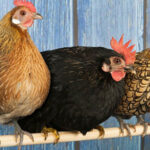
Are you on the fence about whether or not to include a rooster in your flock? Here are 5 reasons to keep a rooster. And, just to confuse you, 5 reasons not to keep a rooster. Reasons to Keep a Rooster Baby Chicks One of the main reasons to keep a rooster is to get […]
Continue Reading
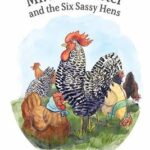
FREE SHIPPING on all supply order totals exceeding $25.00.
Continue Reading
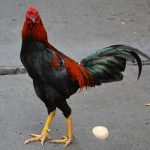
The earliest documented instance of a “rooster” laying an egg occurred in Basel, Switzerland, in 1474. The “rooster” was sentenced to death for the “unnatural crime of laying an egg.” A similar event took place, again in Switzerland, in 1730. In the United States, in 1922 a brown Leghorn “rooster” in Madison, Wisconsin, began laying […]
Continue Reading
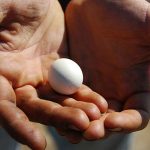
Most chicken keepers know that a hen will lay eggs whether or not a rooster is present. But a rooster is needed in order to get fertile eggs that will hatch. Less well known is that eggs can hatch without a rooster. Virgin Birth Virgin birth, or parthenogenesis, is the process whereby an unfertilized egg […]
Continue Reading
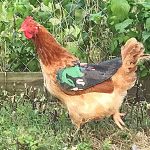
A rooster intent on mating a hen grabs the feathers on her head with his beak while he attempts to stand on her back. To get a good grip, he braces his claws against her shoulders. More often than not, his feet slide on her smooth feathers and — to get better balanced — he […]
Continue Reading
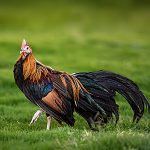
Longtail chickens require specialized treatment to maintain the beauty of their lavish tail feathers. Here are 7 ways the care and feeding of longtail roosters differs from that of other chicken breeds. 1. Plenty of Perches A lot of what we know about caring for longtail chickens comes from the traditional management of Onagadori roosters […]
Continue Reading

A rooster’s wattles come in flexible pairs that dangle beneath the beak, while its comb is a single structure prominently affixed to the top of the head. Researchers have determined that hens base their choice of mates, in part, on characteristics of the comb. But when it comes to wattles, they scratch their scholarly heads […]
Continue Reading
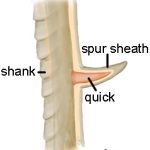
A chicken’s spur is an outgrowth of the leg bone, consisting of soft tissue covered with a protective sheath made of the same tough keratinous material that makes up the chicken’s claws and beak. The spur starts out as a little bony bump. As the chicken matures, the spur grows longer, curves, hardens and develops […]
Continue Reading
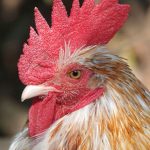
Like the males of 97 percent of all bird species, a rooster does not have a penis. An incubated egg that will become a rooster starts to develop a penis, but early in the second week of embryonic development, a cell death protein called Bmp4 cloaks the incipient penis, causing it to stop developing and […]
Continue Reading
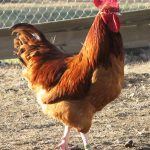
It’s a problem every chicken keeper eventually faces: What to do with unwanted roosters. If you purchase chicks, or hatch your own, you’ll have this problem sooner rather than later. Even sexed chicks that are sold as pullets (young hens) almost invariably include one or more cockerels (young roosters). If you end up with more […]
Continue Reading










